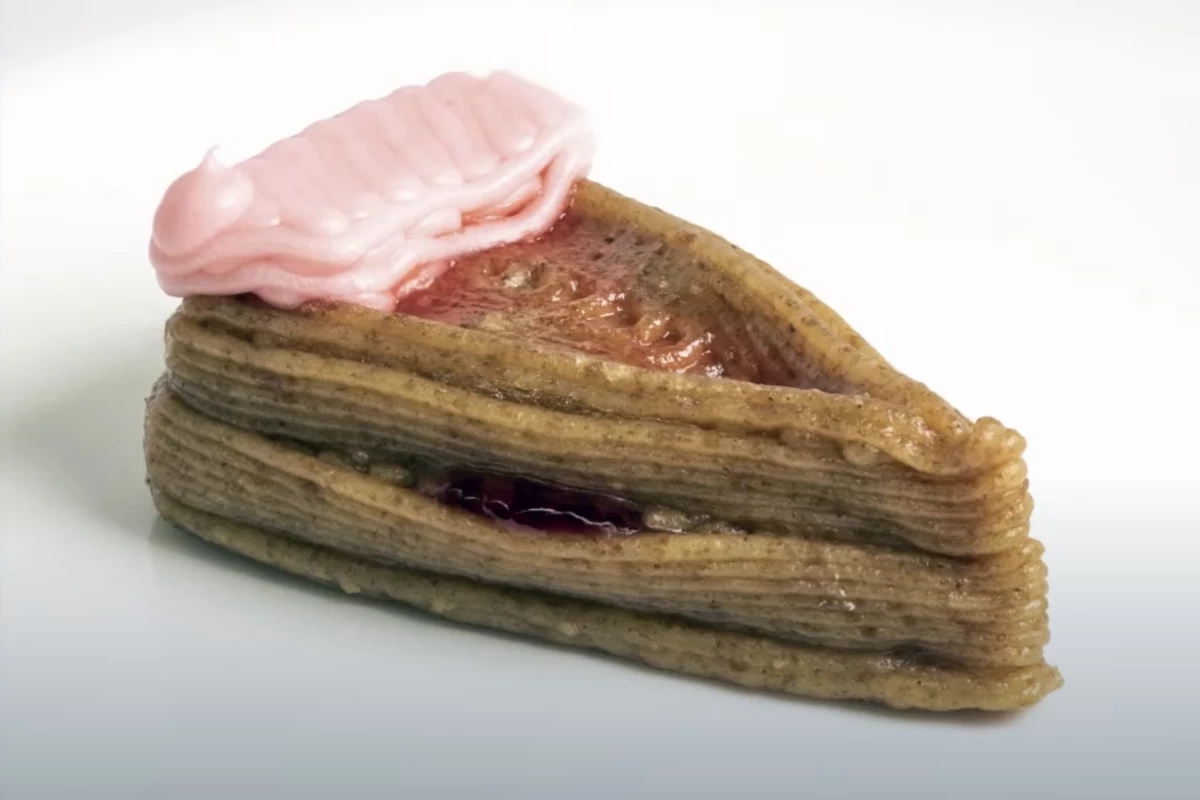We might soon replace our stovetops, ovens, and microwaves with 3D printers after mechanical engineers from Columbia University successfully created a cooked slice of cheesecake made from a record-breaking seven ingredients.
3D food-printing technology has been around since 2006 but has been limited to the use of a few ingredients. Top-of-the-line 3D food printers come with a repository of preloaded recipes, or users can design their own food with the help of a computer or phone.
Producing 3D-printed food requires food-grade syringes primed with printing materials, namely, edible “inks.” The foods that are used need to be soft enough to pass through a syringe printhead, while being viscous enough to maintain their shape. Ordinarily, 3D-printed food requires an additional step such as baking or frying before it’s ready for consumption.
According to a perspective paper produced by mechanical engineers at Columbia University, 3D-printed food has great potential for making creative but tasty, nutritious foods that are also environmentally sustainable.
“Its customizability makes it particularly practical for the plant-based meat market, where texture and flavor need to be carefully formulated to mimic real meats,” said Jonathan Blutinger, lead author of the paper.
So, the engineers set themselves a challenge: to create a cooked slice of cheesecake using many ingredients. For the printing process, they used fused-deposition modeling (FDM), usually used for producing plastic parts, but modified it so the printer could thermally process ingredients using lasers. Two lasers were used, a blue laser and a near-infrared laser, as they can cook thin-layered ingredients effectively.
The engineers chose food inks made from graham cracker paste, peanut butter, strawberry jam, Nutella, banana puree, cherry juice and frosting as their ingredients. To the team’s knowledge, that’s a record-breaking number of ingredients used to print a single food product.
It took seven tries to perfect, but by the eighth iteration, the engineers had printed a seven-ingredient cooked dessert using only software and without user intervention.
With each iteration, the engineers discovered they had difficulty maintaining the cake’s shape. Applying principles similar to those used by architects, the team used more structural ingredients to support the softer ones. The successful design used graham crackers as the foundation for each layer, with peanut butter and Nutella supporting the banana puree and strawberry jam, which tended to pool.
The engineers envisage that now that many ingredients have been used successfully, 3D-printed food could provide diners with new taste experiences. The process could also be used to produce personalized meals for people with food restrictions, parents of fussy eaters, athletes, and nursing home residents.
“We have an enormous problem with the low-nutrient value of processed foods,” said Christen Cooper, one of the paper’s authors. “3D food printing will still turn out processed foods, but perhaps the silver lining will be, for some people, better control and tailoring of nutrition – personalized nutrition.”
For those who find the finished product esthetically underwhelming, the engineering team promises that future products needn’t look so unappetizing.
“Controlling the extrusion pathway [of the printer] gives us the ability to create unique lattice structures and interwoven ingredient combinations that are otherwise impossible to recreate using conventional extrusion or molding methods,” say the researchers, who will continue to work on improving their device to optimize its performance.
The below video shows the engineering team’s experiments using different structural ingredients before arriving at the finished, printed product.
The perspective article was published in the journal NPJ: Science of Food.
Source: Columbia University





